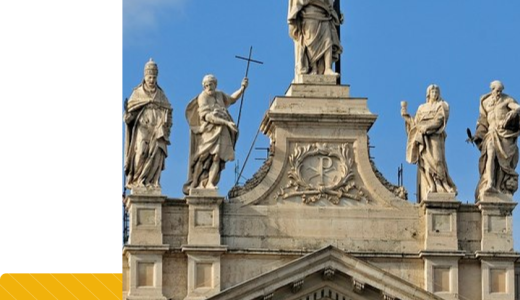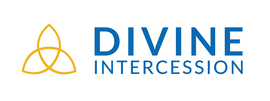The Catholic Rite


Insights
The Catholic Rite
The Spiritual Affliction “industry” is unregulated. There are no universally agreed international standards of what constitutes the circumstances for Intervention, there are no common protocols for treatment. It’s not as if there’s a committee somewhere that decides what “professional best practice” is and what that looks like. Perhaps that’s a good thing, perhaps not.
 The reality is that even in the 21st Century, Spiritual Affliction is a cottage industry, about as professional in most cases as psychiatry was in the Middle Ages.
The reality is that even in the 21st Century, Spiritual Affliction is a cottage industry, about as professional in most cases as psychiatry was in the Middle Ages.
 What’s worse, it has a stigma attached to it that is difficult to shake. People would rather admit that they were the victims of child sexual abuse than that they were the victims of demonic possession. Certainly, mainstream science thinks that Spiritual Affliction is just another form of mental illness, cloaked in a mantle of superstition.
What’s worse, it has a stigma attached to it that is difficult to shake. People would rather admit that they were the victims of child sexual abuse than that they were the victims of demonic possession. Certainly, mainstream science thinks that Spiritual Affliction is just another form of mental illness, cloaked in a mantle of superstition.
 And mainstream churches aren’t much better at dealing with the issue. At worst they talk about Spiritual Affliction in hushed voices; at best they send mixed messages about it. They certainly don’t advertise themselves as offering anything like a “Clinic for the Spiritually Afflicted”.
And mainstream churches aren’t much better at dealing with the issue. At worst they talk about Spiritual Affliction in hushed voices; at best they send mixed messages about it. They certainly don’t advertise themselves as offering anything like a “Clinic for the Spiritually Afflicted”.
 One would think that with a history stretching back two thousand years, the Catholic Church, and its close cousin, the High Anglican Church would be a little more organized about things, but they’re not. Perhaps this will change in time. In the present day, the office of the Exorcist no longer officially exists in the Catholic Church.
One would think that with a history stretching back two thousand years, the Catholic Church, and its close cousin, the High Anglican Church would be a little more organized about things, but they’re not. Perhaps this will change in time. In the present day, the office of the Exorcist no longer officially exists in the Catholic Church.
 In the public imagination, Possession and Exorcism are the defining face of Spiritual Affliction and how it “should” be dealt with. As a Uniting Church minister, I am not an expert on the Catholic Rite of Exorcism, nor can I vouch for its efficacy or completeness. But from what I can tell the principal differences between what I do and what Catholic Priests do is this.
In the public imagination, Possession and Exorcism are the defining face of Spiritual Affliction and how it “should” be dealt with. As a Uniting Church minister, I am not an expert on the Catholic Rite of Exorcism, nor can I vouch for its efficacy or completeness. But from what I can tell the principal differences between what I do and what Catholic Priests do is this.
 The Catholic Rite of Exorcism is standardized. It is a fixed set of prescribed steps and prayers that follows a particular script. Much of this script was originally inspired by Saint John Chrysostom, who lived between the years 344 and 407 AD. St. John’s words are used in the Orthodox Churches.
The Catholic Rite of Exorcism is standardized. It is a fixed set of prescribed steps and prayers that follows a particular script. Much of this script was originally inspired by Saint John Chrysostom, who lived between the years 344 and 407 AD. St. John’s words are used in the Orthodox Churches.
An example of his work, translated from the Greek in which he wrote, looks like this:
“We beseech Thee, O Lord, Almighty God, Most High, untempted, peaceful King. We beseech Thee Who has created the heaven and the earth, for out of Thee has issued the Alpha and the Omega, the beginning and the end, Thou Who has ordained that the four-footed and irrational beasts be under subjection to man, for Thou hast subjected them. Lord, stretch out Thy mighty hand and Thy sublime and holy arm and in Thy watchful care look down upon this Thy creature and send down upon him/her a peaceful angel, a mighty angel, a guardian of soul and body, that will rebuke and drive away every evil and unclean demon from him/her, for Thou alone are Lord, Most High, almighty and blessed unto ages of ages. Amen.”
In spite of the long history of Roman Catholic rites, The Rituale Romanum was only properly codified after the Second Vatican council in 1964 and on 26 January, 1999, the Catholic Church, under the supervision of Cardinal Jorge Arturo Medina Estevez, published New Rite of Exorcism Guidelines. It is not without its critics, even within the Catholic Church. It does not, for example take into account the expulsion of demons from physical objects and it leaves the priest two options for the expulsion of demons, one of which, a “deprecatory prayer to God” is judged by some, to be useless.
Insights
The Catholic Rite
As I’ve said, as a minister ordained in the Assemblies of God Church, I am not an expert on the Catholic rite. I can only say that my personal biggest criticism is that the Rite of Exorcism is incomplete, in that it deals only with the expulsion of Demons. It says nothing about the vital Divine Cleansing and Healing work that must be done to repair the pollution and damage that the Demons have wrought. This is akin to exterminating a house that has been infested with rats, without also doing a thorough clean up and repair. The issue of Restoration, of bringing The Formally Afflicted back to full health is not addressed in the Catholic Rite of Exorcism but we address all these challenges and issues in the process of Deliverance.



